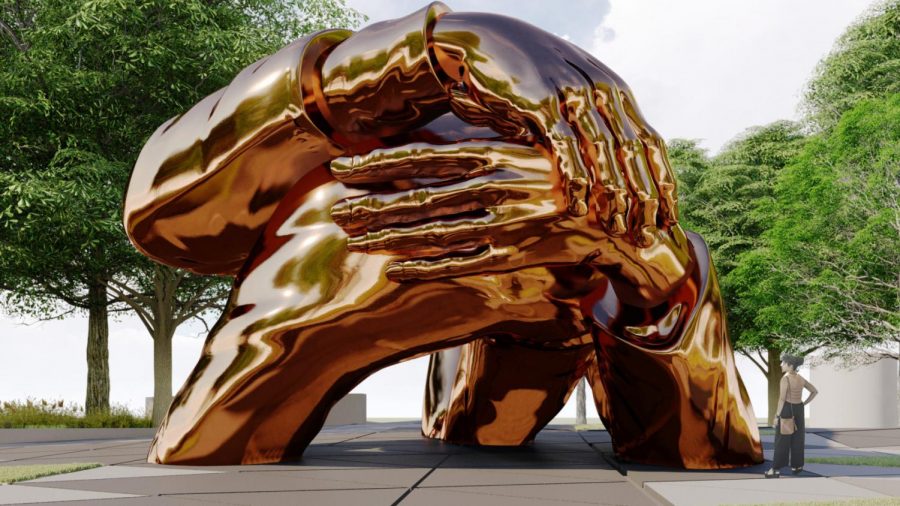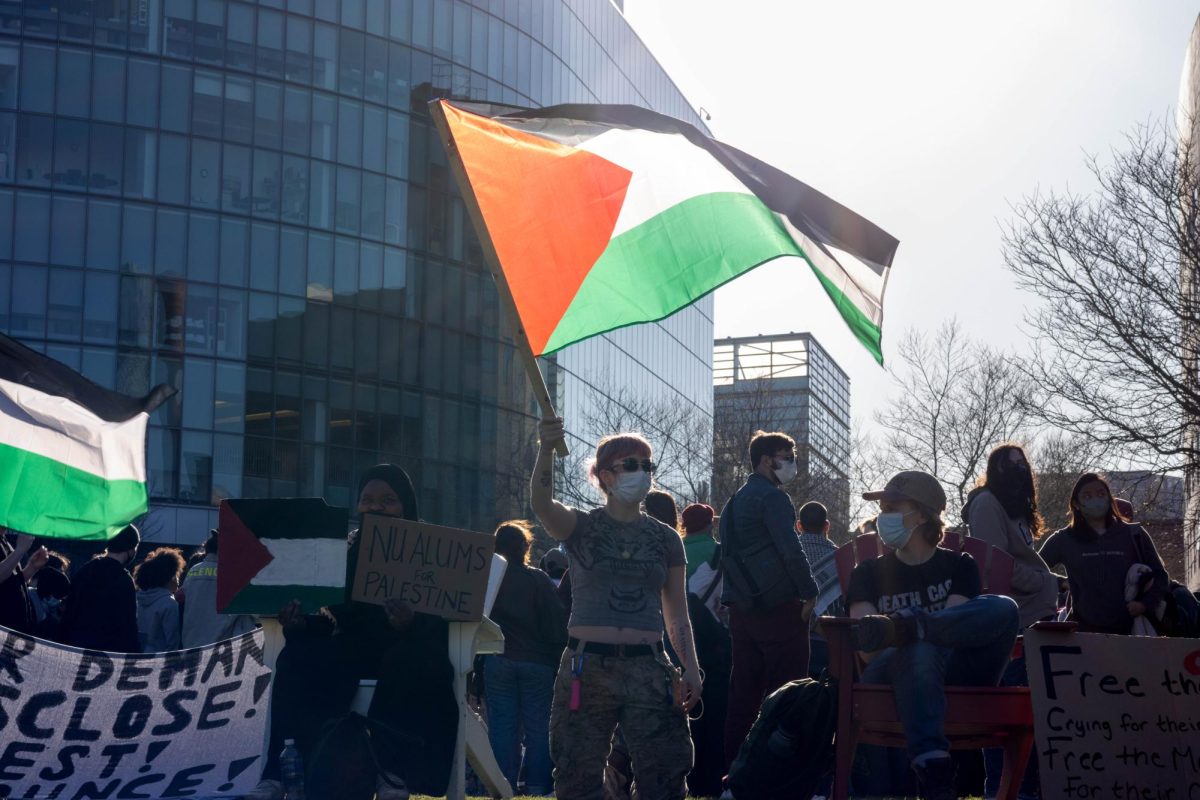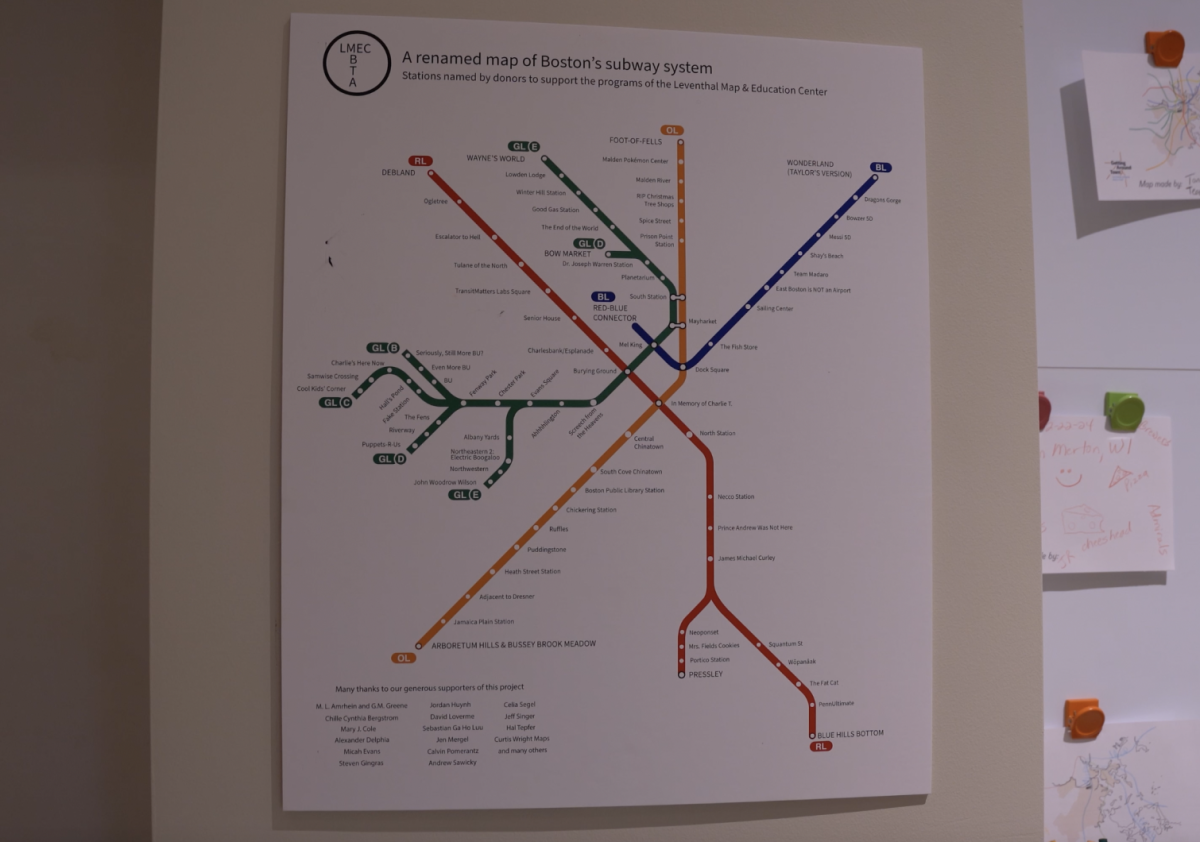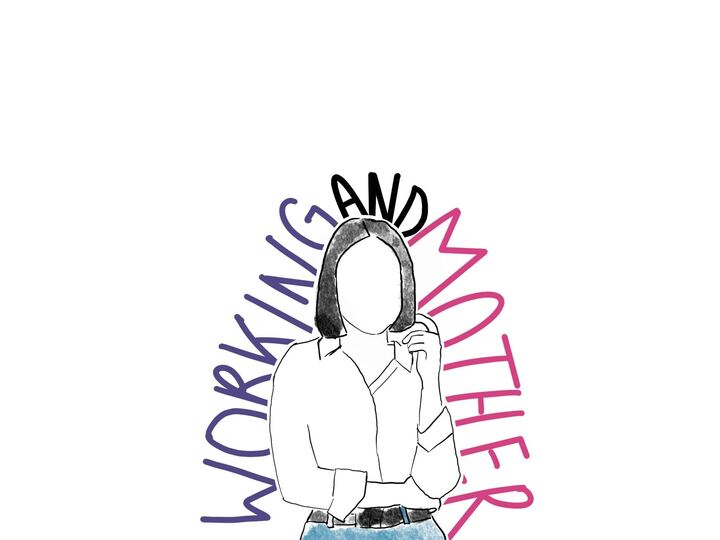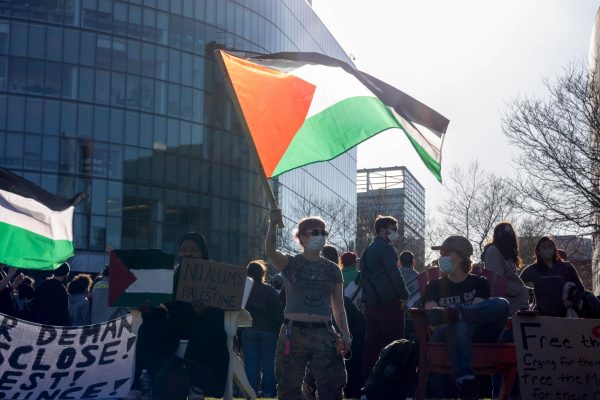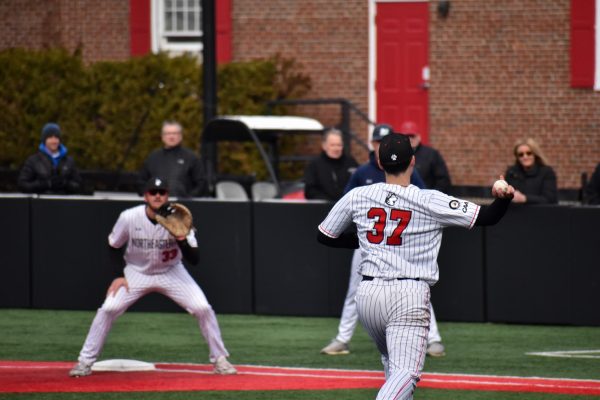Boston is closer to having a major MLK memorial
Titled “The Embrace,” the future Boston Common memorial is designed by Hank Willis Thomas and the MASS Design Group.
March 27, 2019
The non-profit King Boston announced on March 4 the official design for a memorial dedicated to Martin Luther King Jr. and Coretta Scott King to be installed on Boston Common.
Artist Hank Willis Thomas and MASS Design Group created the chosen design, titled “The Embrace,” which consists of a pair of mirrored-bronze arms in an embrace.
This is the latest step in a project that kicked off in September 2017. The memorial efforts were organized by King Boston, a group that was founded initially with only the goal of creating the monument but has since expanded to working on programs about Martin Luther King Jr. and Coretta Scott King and their lives in Boston.
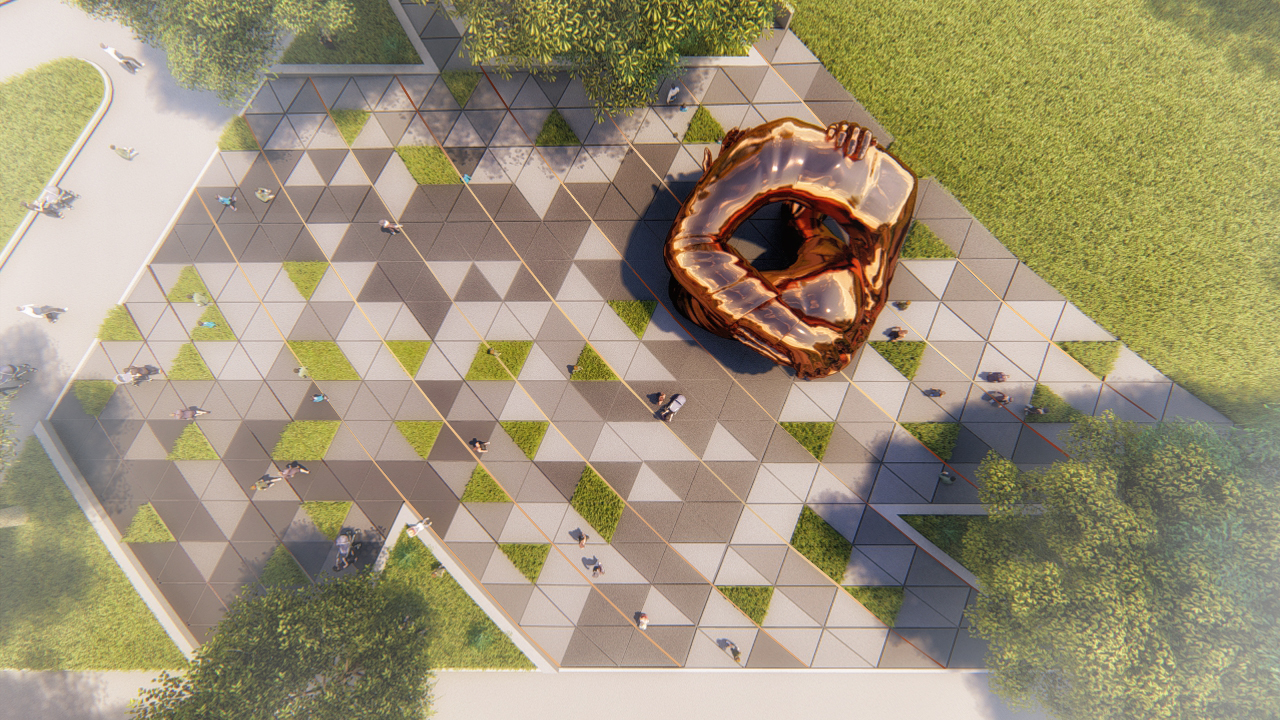
The memorial is meant to draw viewers’ attention, urging them to find out more about King Boston.
King Boston founder and co-chair Paul English said Boston should be home to a memorial that celebrates the early portion of the Kings’ lives, which were spent in Boston.
“I think it’s important for the city of Boston to commemorate the time the two of them spent in the city together and then beginning their professional lives together here,” English said.
Marty Blatt, a Northeastern professor of the practice in history, said it is fitting for Boston to have a memorial to a figure like King.
“King is probably one of the greatest orators in American history, and the two of them have said their early history is significant in Boston, so it certainly is appropriate to have a memorial to the two of them in Boston,” Blatt said.
According to the King Boston website, “The Embrace” represents the love that was the “core message of the Kings’ sermons, talks and writings.” Blatt said he worries “The Embrace” will not immediately make many people understand the connection to the Kings, or if it does it will focus on King’s early positions without considering the struggles King later fought, including economic issues, class issues and imperialism. Blatt said these later positions are often not examined in historical discussions.
“These were positions that were contentious at the time and have resonance right through to today,” Blatt said. “They’re not dated — nor, of course, are love and reconciliation.”
English said the sense of love was prominent even in King’s later positions.
“If you read Dr. King’s speeches over the years, whether he’s speaking about civil rights or the anti-war movement or immigrants’ rights or workers’ rights or economic disparity, whenever he preached on these issues, he would always start with a common element of humanity and love and equality,” English said.
As for Blatt’s concern that visitors won’t understand the immediate significance of what they’re looking at, English said that is part of the method they plan to use to connect the memorial to another part of the project, called the King Center for Economic Justice.
English said the center will aim, to figure out how to decrease the disparities between white and black Bostonians. The idea for it came from a series of 14 public discussions about the memorial. Now that the King Boston art committee has selected a design for the memorial, English said he will turn his focus towards the center. The group is beginning closed meetings with locals already working on economic justice and English said he expects to open meetings to the public this summer.
The center, which King Boston will construct in Roxbury, came from a discussion about the location of the memorial. While King Boston settled on the Common for the memorial because English said it is “a meeting ground for the city,” they wanted to give the project some roots in Roxbury, a predominantly black neighborhood in Boston.
The memorial still has to go through a review process from the Boston Landmarks Commission, and Elizabeth Vizza, executive director of the Friends of the Public Garden, said that process will be important to make sure the finalized design fits in with the space and design of the park.
“I think that it will be important that the final product and the final memorial space fit beautifully into this park and enhance the park and serve the purpose of the memorial,” Vizza said.

The proposed design was chosen from a group of five.
Vizza said that with all the considerations in terms of size, material and character of the memorial, it is important to remember that changes may be made in the future.
“Those are important assessments to look at when you’re looking at a monument that’s going to stand the test of time in a park that’s also not a large park and has over 20 monuments already and millions of people use it each day,” Vizza said. “So, in order for it to be a successful final product and serve the historic Common well, through time, I think it’s going to be essential that there be an evolution of the initial concept that I don’t think everybody understands.”
A lot of the discussions about the memorial to this point, Vizza said, weren’t committed to public forums.
“Hopefully, in this next chapter, when we want the final result to be something that we’re all proud of and happy with, there will be a really thorough conversation at the city level about how this can be a success on the Boston Common,” Vizza said.
A memorial to the Kings is important to build now, Vizza said. With all the visitors who pass through the Common on a daily basis, English said he hopes the memorial will contribute to a discussion about race in Boston today.
“What we’re going to do, through signage at the spot, is to challenge visitors to say, ‘If the Kings were alive in the city of Boston today, in 2019, or 2020, or whatever, what do you think they should be working on, and therefore what do you think we should be working on together?’” English said.


